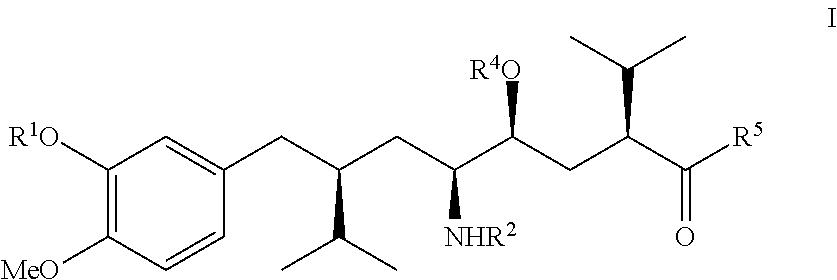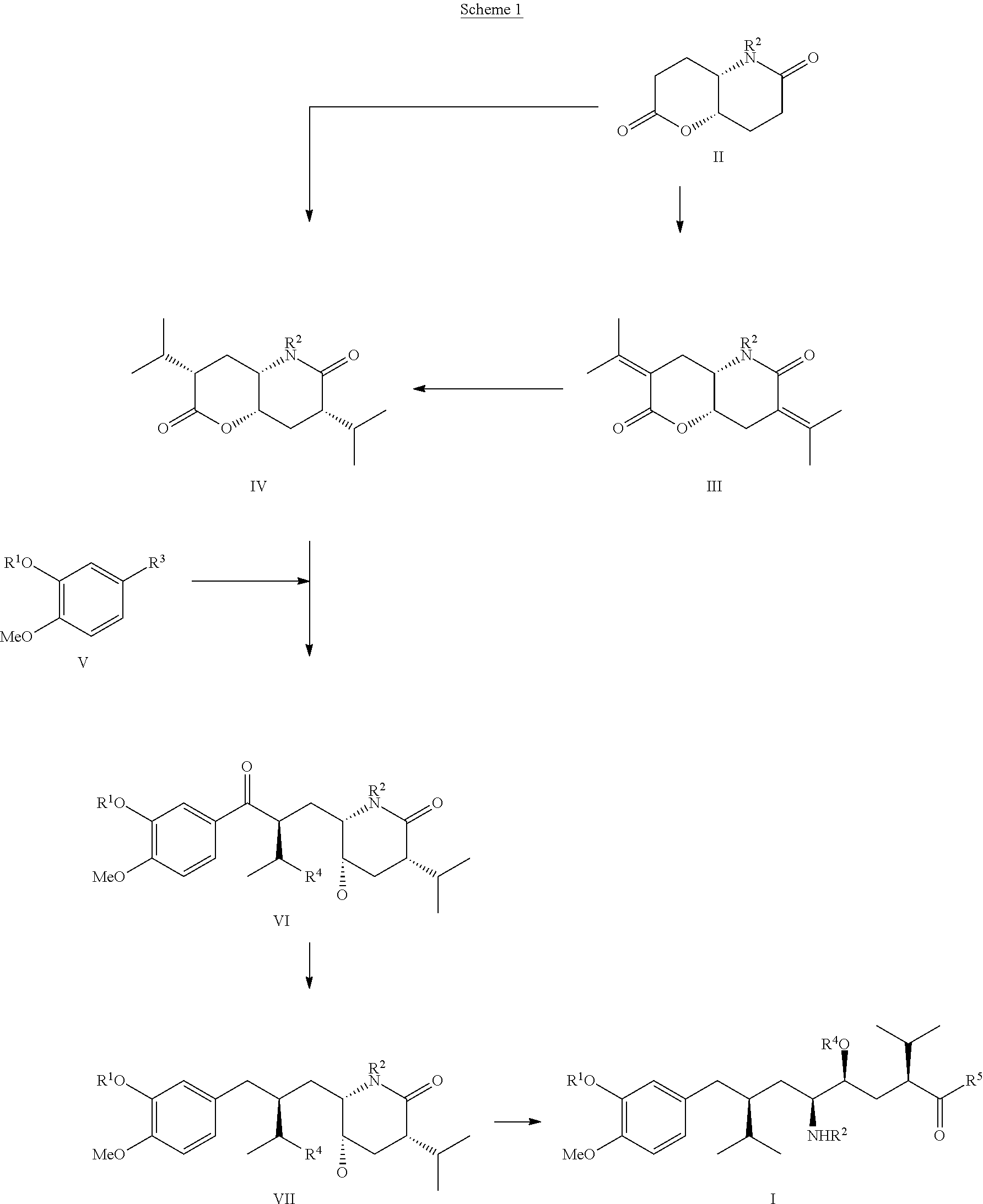Process for the manufacture of enantiomerically pure aryloctanoic acids as aliskiren
a technology of aryloctanoic acid and aliskiren, which is applied in the preparation of carboxylic acid amides, chemistry apparatus and processes, and organic chemistry, etc., can solve the problems of complex synthesis of enantiomerically pure compounds and none of them meet the requirements of a short and cost effective manufacturing process, and achieve cost-effective effects
- Summary
- Abstract
- Description
- Claims
- Application Information
AI Technical Summary
Benefits of technology
Problems solved by technology
Method used
Image
Examples
example 1
Preparation of Compound (IVa) from Compound (IIa)
[0049]
[0050]A 1.56 M solution of butyllithium in hexane (150 ml) was added over ca. 15 min under good stirring in an atmosphere of dry nitrogen to a cooled (−40° C.) solution of dry diisopropylamin (25 g) in dry THF (200 ml). To this solution, stirred for ca. 10 min at −40° C., a solution of compound (IIa) as shown above (26 g), dissolved in dry THF (75 ml), was then added at a rate that the reaction temperature did not exceed −40° C. Stirring was continued at −40° C. for ca. 30 min. To the slurry diisopropyl iodide (50 g) was added slowly and the temperature kept at under −40° C., the reaction mixture stirred then for another 3 hrs, wormed up to ca.-10° C. and stirred for another 2 hrs. The reaction mixture was poured on water (500 ml), the aqueous phase extracted 4 times with ethylacetate (4×150 ml), the combined organic phases washed with brine, dried with sodium sulfate, filtered and evaporated under reduced pressure providing the...
example 2
a1) Preparation of Compound (VIa) From (IVa) Via Grignard Reagent
[0052]Several crystals of iodine were added to a suspension of magnesium turnings (5 g) in THF (150 ml) and the mixture was stirred at rt under nitrogen for ca. 3 hrs, then 10 drops of 1,2-dibromo butane were added and the mixture stirred for another 30 min. To this slurry compound (Va) (28 g), dissolved in dry THF (100 ml), was slowly added under stirring that the solvent started to reflux. When the addition was complete the reaction mixture was maintained under reflux for another hr. The reaction mixture was then cooled to it and added dropwise within a period of ca. 1 hr to a solution of compound (IVa) (28 g) and dry CeCl3 (10 g), both dissolved in dry THF (150 ml) and cooled to −78° C. After addition the slurry was then stirred at −78° C. for another 2 hrs, acetic acid (25 ml) added at the same temperature and the mixture finally poured on saturated ammonium chloride solution (100 ml). After dilution with water (50...
example 3
a2) Preparation of Compound (VIa) From (IVa) Using Lithium Reagent
[0053]To a solution of compound (Va) (30 g) dissolved in dry THF (250 ml), cooled to −78° C., 1.56 M solution of butyl lithium (80 ml) was slowly added under stirring that the reaction temperature was kept at −70° C., then stirred at this temperature for 1 hr before dry CeCl3 (2 g), dissolved in dry THF (50 ml), was added. This reaction mixture was then added dropwise within a period of ca. 1 hr to a stirred solution of compound (IVa) (26 g), dissolved in THF (100 ml) and pre-cooled to −40° C. After stirring for 2 hrs at −40° C. the mixture was poured on saturated sodium bicarbonate solution (100 ml), the aqueous phase extracted 4 times with ethyl acetate (4×100 ml), the combined organic phases washed once with saturated sodium bicarbonate solution (200 ml), dried over magnesium sulphate, filtrated and the solvents evaporated under reduced pressure providing the title compound (VIa) as a single diastereomer: crude 25 ...
PUM
 Login to View More
Login to View More Abstract
Description
Claims
Application Information
 Login to View More
Login to View More - R&D
- Intellectual Property
- Life Sciences
- Materials
- Tech Scout
- Unparalleled Data Quality
- Higher Quality Content
- 60% Fewer Hallucinations
Browse by: Latest US Patents, China's latest patents, Technical Efficacy Thesaurus, Application Domain, Technology Topic, Popular Technical Reports.
© 2025 PatSnap. All rights reserved.Legal|Privacy policy|Modern Slavery Act Transparency Statement|Sitemap|About US| Contact US: help@patsnap.com



